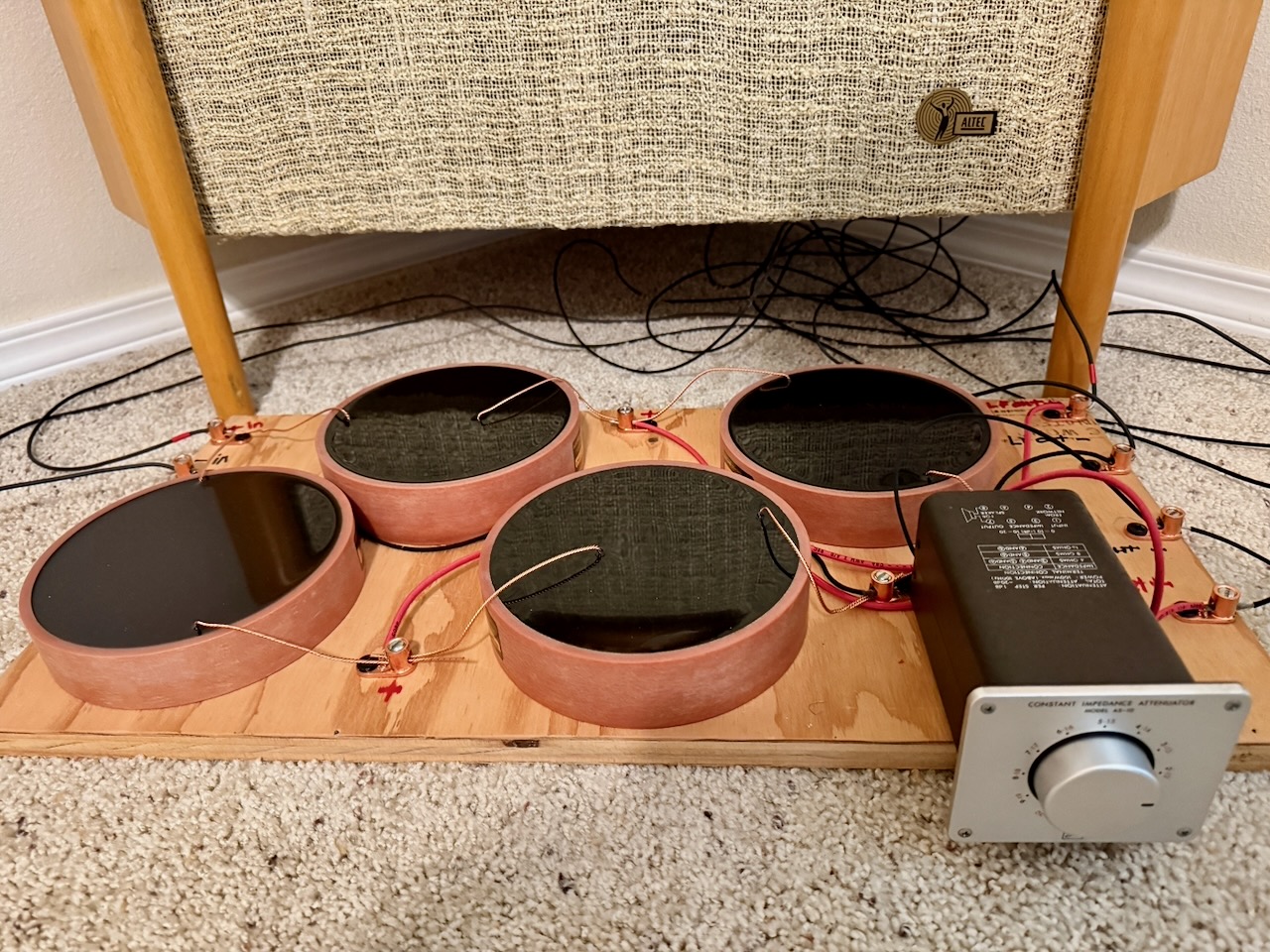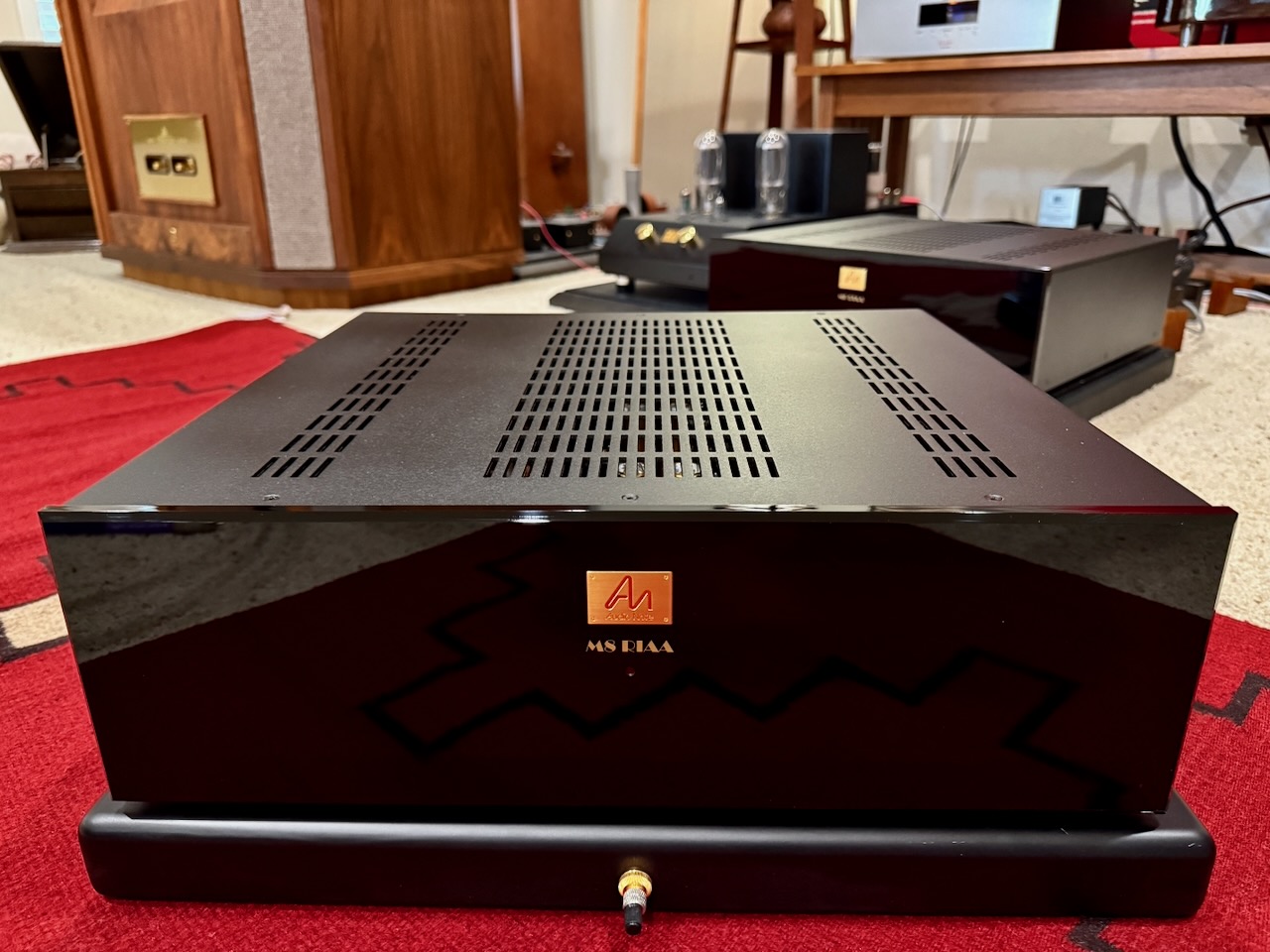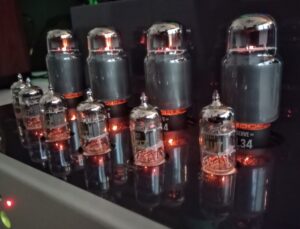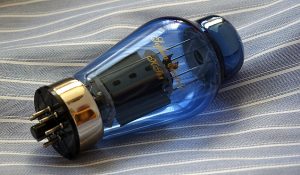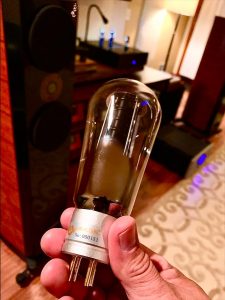It has been quite some time since my last article for Positive Feedback about the Sophia Electric vacuum tubes developed and offered by Sue and Richard in McLean, Virginia.
It was all the way back in August of 2017 that I wrote about the Sophia Electric EL34-ST (photo below) and Aqua 274B vacuum tubes (HERE), almost three years ago now.
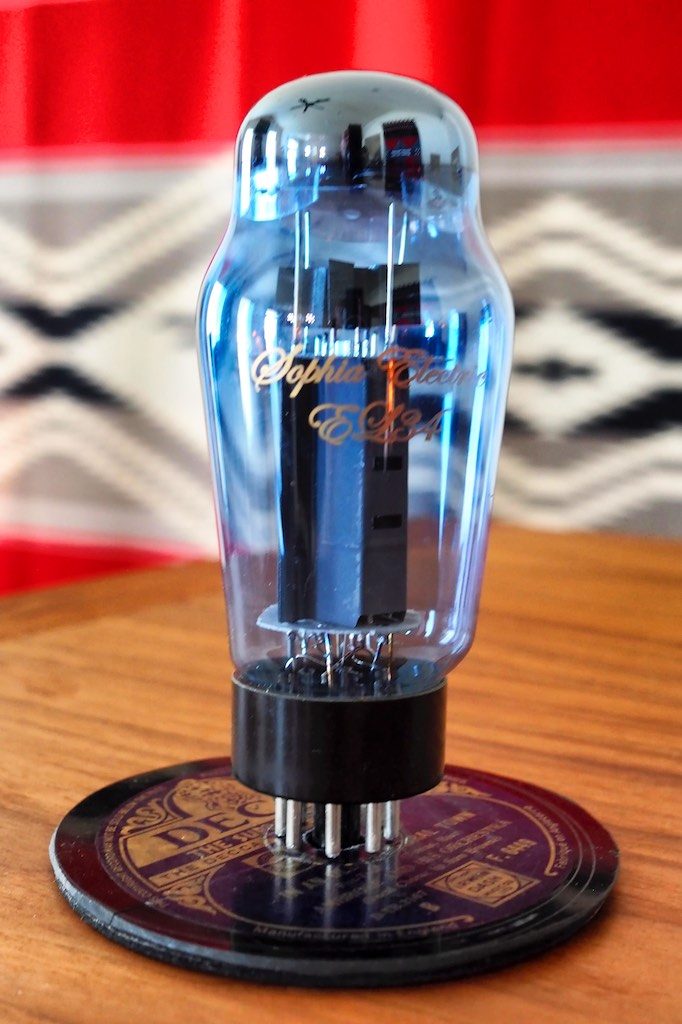
Since then both the Sophia Electric EL34-ST and Aqua 274B (photo below) vacuum tubes have seen long term use in my Leben CS-600 integrated amplifier, and vintage McIntosh MC30 monaural amplifiers, respectively.
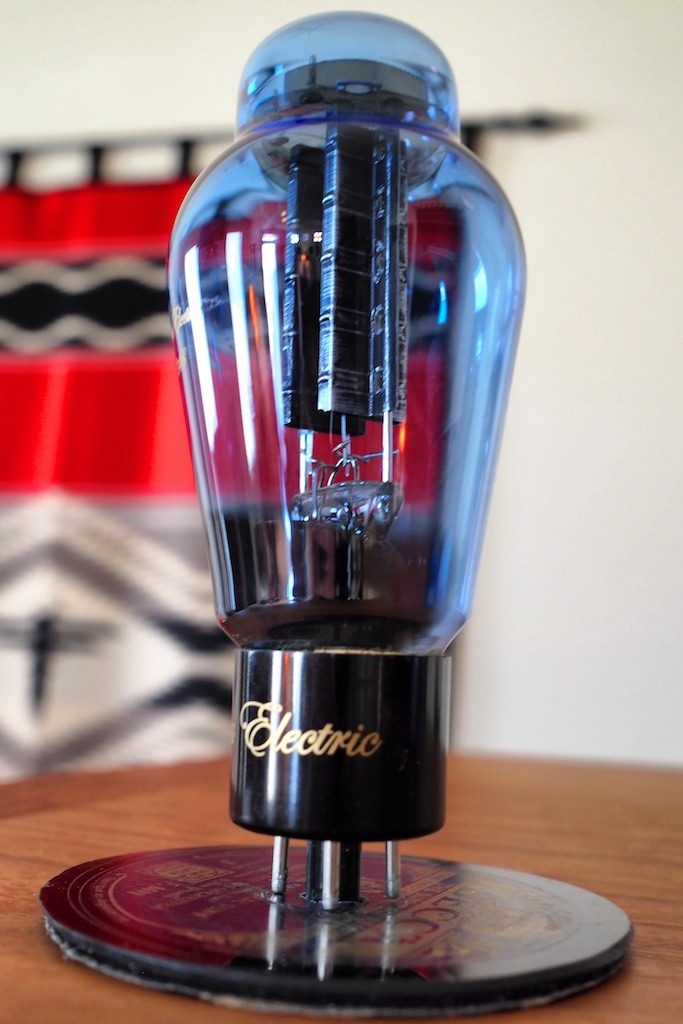
The Sophia Electric KT88-ST vacuum tubes (below) that you will be reading more about in a moment are described as "long life versions."
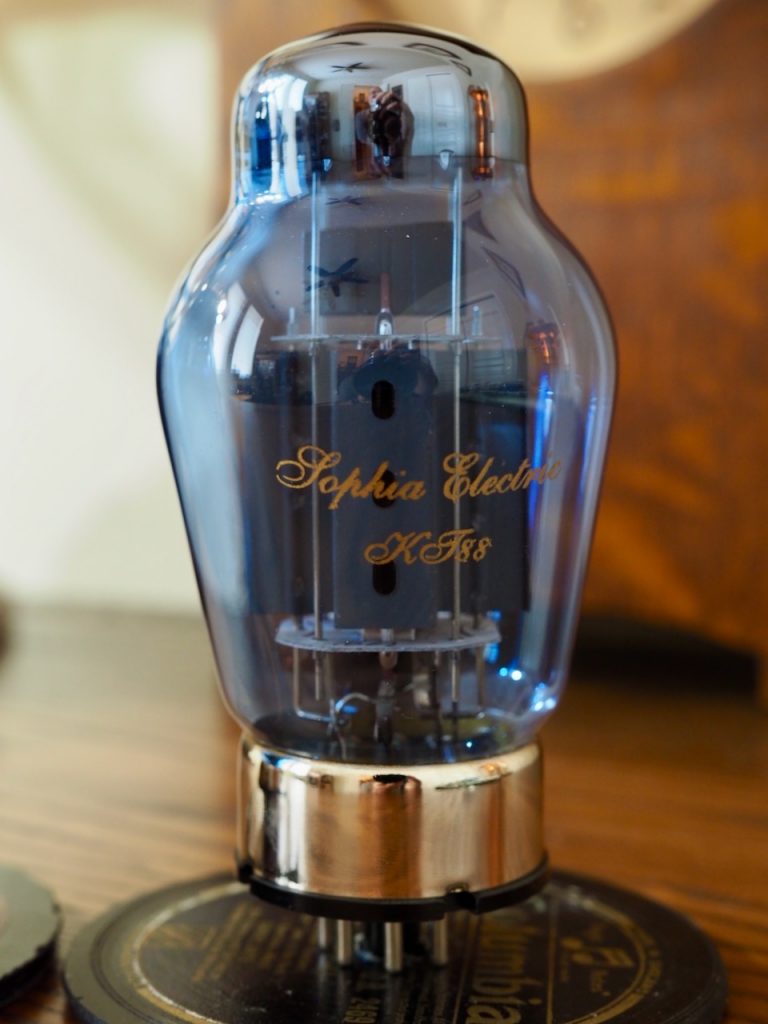
I have to say "long life" is an apt description based on my experience with the Sophia Electric EL34-ST vacuum tubes (as well as the Aqua 274B rectifiers), even though Sophia Electric doesn't assign that designation to those tubes.
I estimate that the Sophia Electric EL34-ST vacuum tubes from my August 2017 article have now accumulated somewhere between 4,000 to 6,000 hours on them, based upon the amount of time that I have put on my Leben CS-600 over that period.
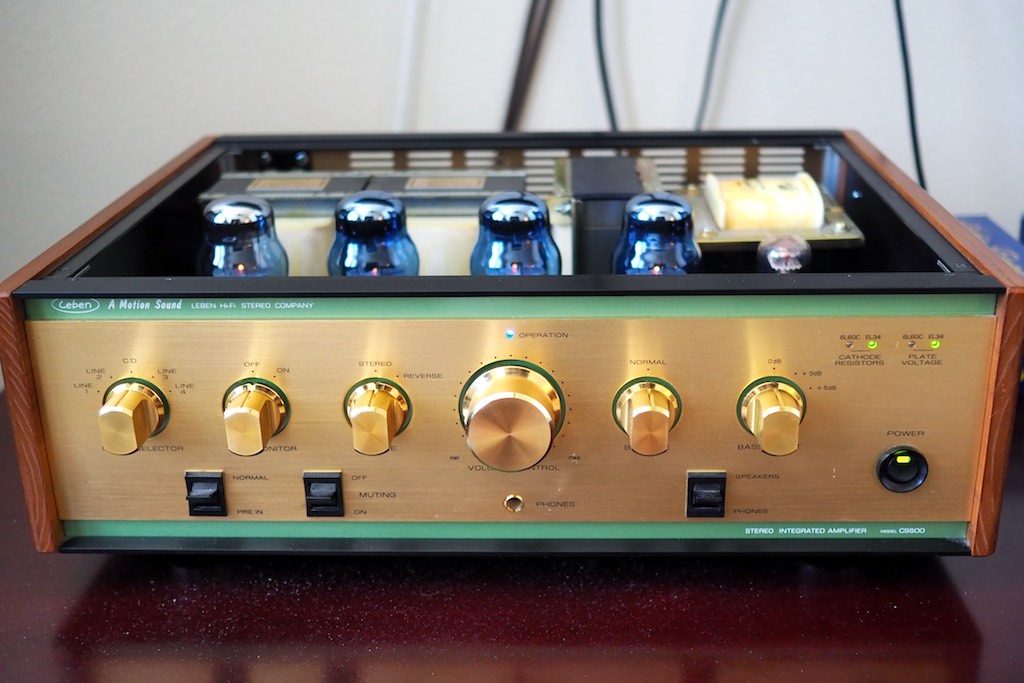
The rule of thumb for generic EL34 vacuum tube lifespan is about 2,500 hours of operation. As a retiree and audio writer, my vacuum tubes and equipment get more daily operational hours than your typical listener, to the tune of 4 to 6 hours a day most days, and some days much more time than that. Thus, my estimated 4000 to 6000 operational hours on the Sophia Electric EL34-ST vacuum tubes significantly exceeds the usual 2,500 hours of operation attributed to generic EL34's. That's long life compared to generic EL34's.
Ok, that should catch you up on the long-term reliability of the Sophia Electric EL34-ST vacuum tubes that I reviewed in my August 2017 review here at Positive Feedback.
Long operational life is definitely a bonus, but the real story about the Sophia Electric EL34-ST vacuum tubes was their extremely high level of musical & sonic performance, which easily surpassed the other vacuum tubes I compared them with, and really raised the bar of performance in my Leben CS-600 integrated amplifier.
I thought the Sophia Electric EL34-ST represented "next level" performance, which the more generic (and even NOS) EL34 vacuum tubes in my experience couldn't come close to matching. The Sophia Electric EL34-ST vacuum tubes have also maintained that level of high-performance to this day, and still sound as good as a freshly run-in set of new tubes. That impresses me.
What sparked this review of the Sophia Electric EL34-ST and KT88-ST vacuum tubes was the arrival of the new Leben CS-600X integrated amplifier (reviewed HERE).

I had mentioned to Sue at Sophia Electric how impressed I was with the Sophia Electric EL34-STs in my Leben CS-600, particularly about how long they have lasted and how exceptional they have sounded, and Sue offered to send me sets of the Sophia Electric EL34-ST and KT88-ST to try in the new Leben CS-600X as well.
Originally, I had planned on including my impressions of the Sophia Electric EL34-STs and KT88-STs in the feature review of the new Leben CS-600X at Positive Feedback. However, after listening to them I thought they were such a significant improvement over typical EL34 and KT88 offerings, that they deserved a feature review of their own.
Sophia Electric EL34-ST
First, allow me to repeat some of the history about EL34 vacuum tubes from my August 2017 article, and Richard's comparison of his Sophia Electric EL34-ST to the classic EL34.
Beam power tetrode tubes like the RCA 6L6 (1936) were popular in the vacuum tube marketplace in the 1940s. The European EL34 pentode vacuum tube developed by Philips in 1949, which was the parent company of Mullard, and Mullard would release their EL34 in 1953.
It has been speculated that the development of the EL34 was a way to circumvent the patents held by America's RCA on beam power tubes. Although, it has also been reported that RCA developed the 6L6 beam tetrode tube as a way to circumvent the even earlier Philips patent for the pentode tube design, which indicates intense corporate competition for a valuable vacuum tube market.
While there are differences in the internal construction of a 6L6 beam tetrode and an EL34 power pentode, they are functionally similar, and have a similar range of power output, but distinctly different tone, which has come to be characterized as "American tone" vs. "British tone."
The intent of the Mullard EL34 was to produce an inexpensive tube that could achieve high power with high-sensitivity, allowing designers to develop amplification with a minimum of components to help keep costs down.
Mullard assisted designers by providing a wealth of information about incorporating their vacuum tubes into audio preamplifier and power amplifier designs in the Mullard Circuits for Audio Amplifiers (1959), which is fascinating to read, by the way.
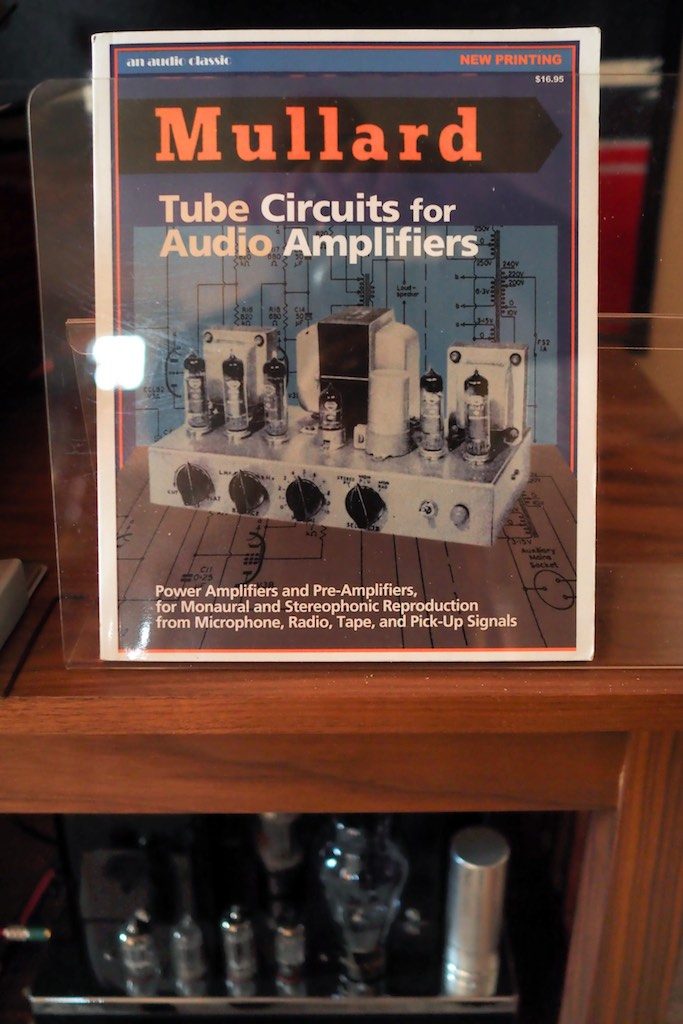
The EL34 was rapidly embraced in for both audio and guitar amplifiers, with notable audio designs employing the EL34 like the Marantz Model 2, Model 5, Model 8A, Model 8B, and Model 9 amplifiers, and the very popular Dynaco Stereo 70.
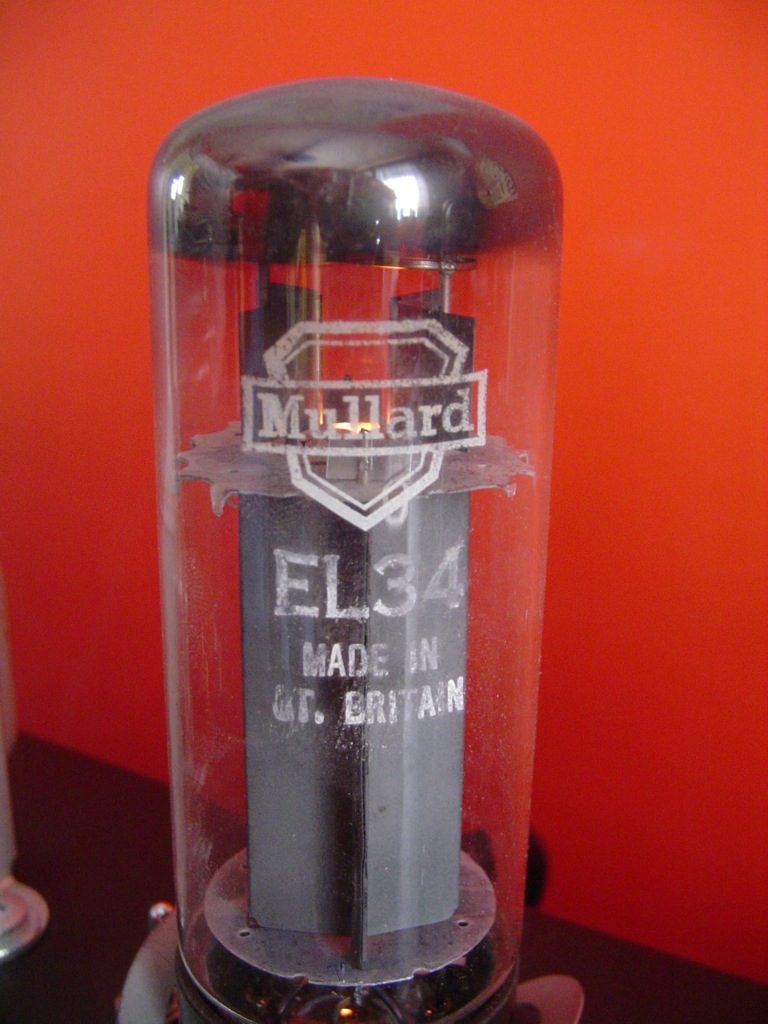
Public domain photo from Wikipedia commons.
The EL34 was introduced into the guitar world when Marshall introduced it into their production guitar amplifiers, like the JTM 50 (1966) and JTM 45 (1967).
For those of you interested in learning more about EL34 vacuum tube history, I recommend you take a look at the Mullard Circuits for Audio Amplifiers, and in particular I encourage you to read Eric Barbour's two excellent articles about the history of the EL34 vacuum tubes in Vacuum Tube Valley Issue 2 and Issue 16.
Richard on the Sophia Electric EL34-ST:
"The origins of EL34 tubes can be traced back to Europe during the late vacuum tube era. Its creation was to fulfill the purpose of being easily mass produced during a time when cost cutting was important, and this resulted in many limitations being placed on the tubes."
"The EL34 tube is important, because with the resurgence of vacuum tubes in the 1990s, the EL34 tubes also regained worldwide popularity in thanks to its low drive voltage requirement that was sufficient for 20-35 watts per channel of power output for home use."
"Eastern European, Russian, and Chinese vacuum tube manufacturers have all taken the original European EL34 as the basis for their designs, and have replicated it in massive production without pondering the "whys" and "hows" of that original design."
"The EL34 design is an industrial tube, using a straight glass pipe sliced into cylinders on the assembly line for fast production. The shape of the tube, known as GT shape, was never considered for its sound quality. In other words, by making the EL34 tubes the same way they were originally created, the quality of the sound is sacrificed for the sake of time and profit."
"We think of Sophia Electric as an innovative American company, and thus we aim to redesign well known products like the classic EL34 design, to improve especially upon the sound quality. In the process of designing our high-performance 126S amplifier, we rediscovered the use of EL34 tubes for replacing the Western Electric 350B and 6L6 in the classic WE 124 amplifier circuit that we started with. But we really wanted high-quality tubes to pair with our new amplifier, so we decided it was vital to redesign a brand new EL34 tube to create the ultimate in sonic performance for our new 126S amplifier."
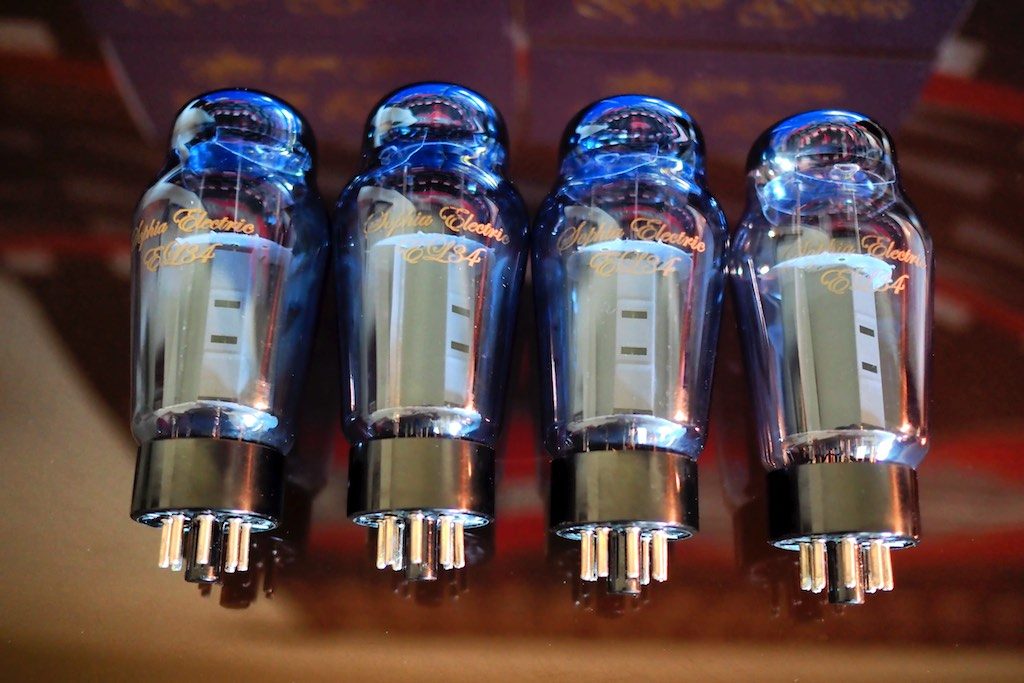
"The original EL34 tube is a pentode power tube design that is known for bright, direct, and somewhat straight-in-your-face sound. When the EL34 tube is pushed too hard it generates an excessive amount of distortion, which is good for rock & roll guitar amplifiers, but not for high-end audio amplifiers."
"So, we designed our new EL34-ST to be closer to the European KT66 family of tubes, yet we still wanted to retain the key characteristics of the original EL34 tube design. Our new design replaces the original EL34's plain and rather uncivilized sound with a more refined and artistic sound. The EL34-ST is articulate, yet still lyrical. It has more micro-contrast in the nuance of the music, and more vividness in the 3-D stereo soundstage that audiophiles enjoy."
"Electrically the specifications of the EL34-ST are same as the vintage Mullard, with a heater (filament) voltage of 6.3V AC, a heater current of 1.5A, a maximum plate voltage of 800V, and a maximum power dissipation of 25 watts."
"As a result, Sophia Electric's new EL34-ST tube is a direct replacement for vintage Telefunken and vintage British made Mullard EL34 tubes. It is also a safe direct replacement and premium upgrade choice for amplifiers currently outfitted with Chinese, Russian (the current "Mullard" is a Russian tube), and other Eastern European EL34 tubes."
"The vintage EL34's utilized a GT shape glass enclosure that was cheap and simple to mass produce. In the production line, each glass tube was created like a long sausage being sliced."

"For the Sophia Electric EL34-ST we chose to use an ST shaped glass bottle similar to those used for 300B's, which helps give the EL34-ST a 300B-esque sound. In fact, we applied much of our 300B design and manufacturing expertise in the creation of our new EL34-ST vacuum tube. The larger ST bottle shape gives our EL34-ST tubes a sound that is more airy and live-like compared to the cheap GT glass tube."
"The blue tint that we've added to the glass not only looks exotic, but during the voicing process we found that the blue tint of the ST shaped enclosure added more sonic impact to the presentation of the music. Vintage US military tubes often had a black metal base and / or black-grayish smoky carbon-containing paint sprayed on the inside of the glass tubes for light shielding to reduce noise. British and German military tubes often used red paint for light shielding to reduce noise. We have auditioned various light shielding possibilities, and ultimately settled on the blue tinted glass, which when combined with ST bottle shape, provided additional musicality and a distinctly better tone."
"Back when all vacuum tubes were placed inside a chassis, there was no need for consideration about light induced noise. However, high-performance audio enthusiasts now like to see the tubes displayed in the open, so they can see them from their listening seats, and they also enjoy seeing the glow of the filaments. The blue tint ST bottle shape is an ideal solution, as it is a beautiful and excellent sounding bottle shape, and the blue tint offers the benefit of a reduction in light induced noise, while still allowing the listener to see the beautiful glow of the filaments."
"We are confident that those who have an EL34 amplifiers would be thrilled with this brand-new patented Sophia Electric EL34-ST tube."
Sophia Electric offers the following pricing options for the Sophia Electric EL34-ST tubes:
- Grade A (top 10%): $125 USD per tube with 30 days warranty, $25 extra for a one-year warranty.
- Grade B (top 25%): $100 USD per tube with 30 days warranty, $25 extra for a one-year warranty.
Sophia Electric told me that the Sophia Electric EL34-ST tubes are rated to have a mean life span of 7,000 hours, with a range of 5000 – 10,000 hours, which translates to about a four to eight-year lifespan, with a median of just under a six-year lifespan, assuming about 1,200 hours per year of operation.
Sophia Electric KT88-ST
Ok, after that refresher about the Sophia Electric EL34-ST, let's talk about the new Sophia Electric KT88-ST.
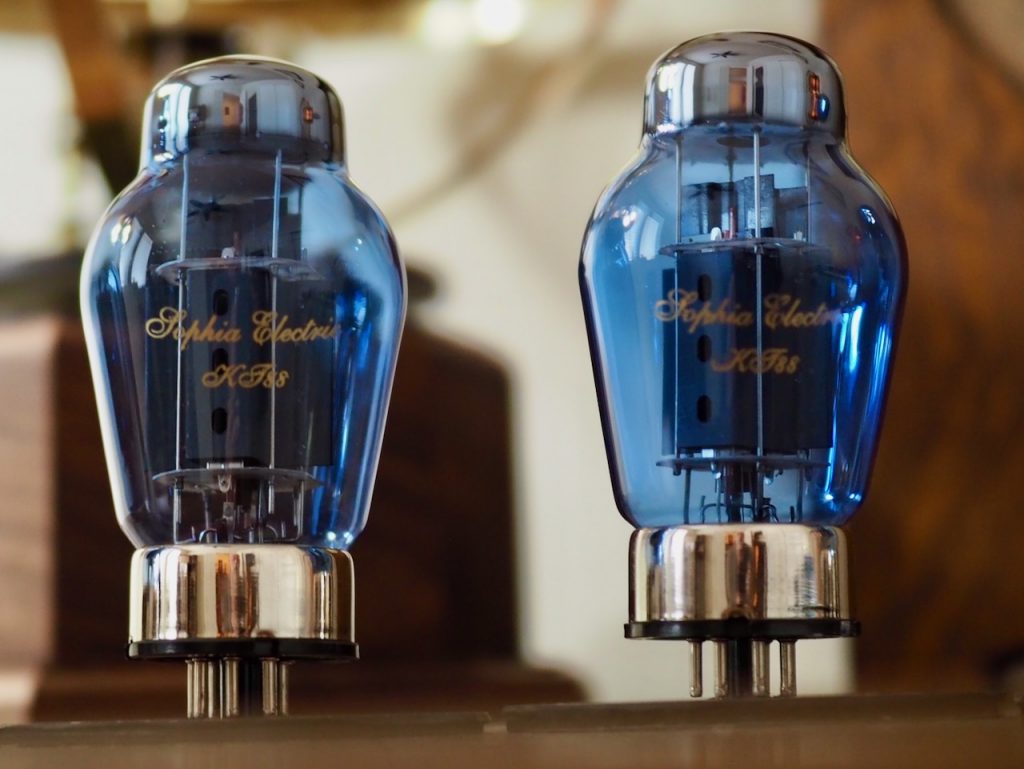
First let's start with a brief history of the KT88. The KT88 beam tetrode vacuum tube was designed specifically for audio by G.E.C in 1956, and was originally manufactured by Marconi-Osram Valve in the U.K. The KT88 was sold under G.E.C, Mullard, and Genalex Gold Lion labels. The KT88 was designed to be a more powerful vacuum tube for audio and could handle plate voltages of 800V, resulting in an output of 50W in push-pull audio applications.
Richard on the Sophia Electric KT88-ST:
"From a design point of view, the Sophia Electric KT88-ST shares similar internal metal material: grid, plate, etc., and mineral coating - in addition to ST glass - as the popular Sophia Electric Classic 300B tubes. The Sophia Electric blue glass KT88-ST tube sounds very much like a 300B tube and delivers 8x more power in a push pull KT88 amp."
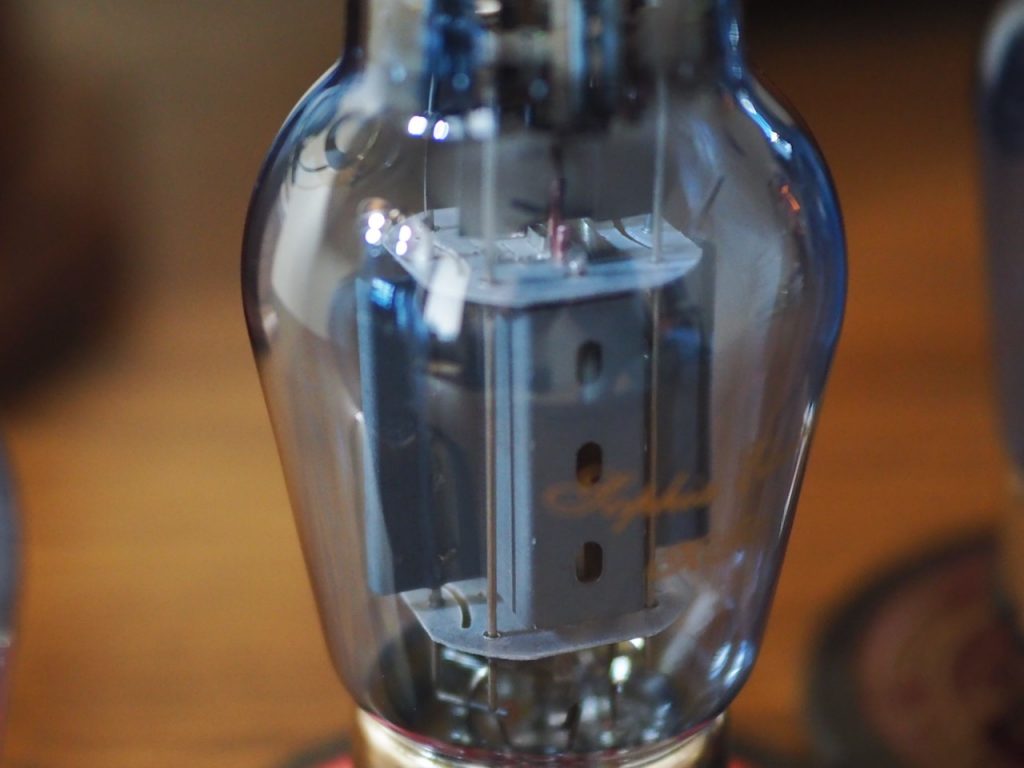
"The same thing is true when the KT88-ST is compared to the Sophia Electric EL34-ST. Musically and sonically, this blue glass KT88-ST should be at least as good as the Sophia Electric blue glass EL34-ST, if not better."
I find what Richard had to say about Sophia Electric KT88-ST to be quite interesting. By analogy from what Richard said about the EL34-ST, using the blue tinted glass for light shielding, combined with the ST bottle shape, should provide "additional musicality and a distinctly better tone" than your typical KT88.
Another aspect of the Sophia Electric KT88-ST that intrigues me is that it uses similar internal design characteristics in terms of metal material, grid, plate, mineral coating, an ST shaped glass bottle, etc., as the Sophia Electric Classic 300B tubes.
I find Richard's characterization of the Sophia Electric blue glass KT88-ST tube as sounding very much like a 300B tube that is eight times more powerful in a push-pull KT88 amplifier intriguing, to say the least.
Sophia Electric offers the following pricing options for the Sophia Electric KT88-ST tubes:
- Grade A (top 10%): $175 per tube with a one-year warranty.
- Grade A (top 10%): $150 per tube with a 30-day warranty.
- Grade B (top 25%): $150 per tube with a one-year warranty.
- Grade B (top 25%): $125 per tube with 30-day warranty.
Review System
The review system for this article is my beloved audio-visual system, which is based upon restored vintage Altec A5 Voice of the Theatre loudspeakers with custom Jean Hiraga inspired crossovers.
I started my vintage Altec Lansing A5 Voice of the Theatre loudspeakers project on December 31, 2016. Gary Fischer did a beautiful job of restoring my vintage Altec A5 Voice of the Theatre loudspeakers, and you can read more details about Gary's work with my A5 loudspeakers in Jeff's Place posts here: Part 1, Part 2, and Part 3.
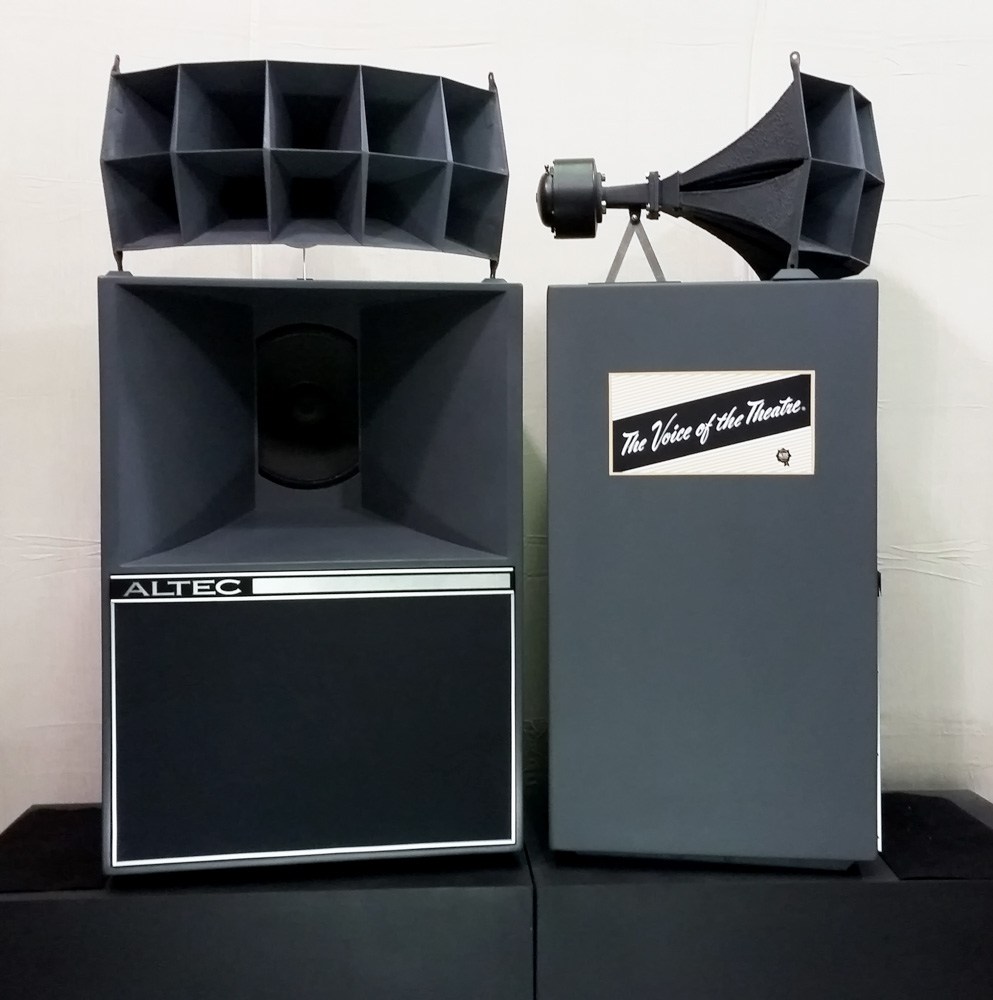
The Altec A5 loudspeakers were originally optimized to provide ample sound reinforcement specific to the needs of small-to-medium sized movie theaters, so the stock crossovers are not really suitable for home listening environments, where they actually sound quite dreadful.
So, to address the stock crossover issue, with advice from friend Yazaki-san, I developed crossovers that optimized the big beasts' performance for smaller domestic listening environments.
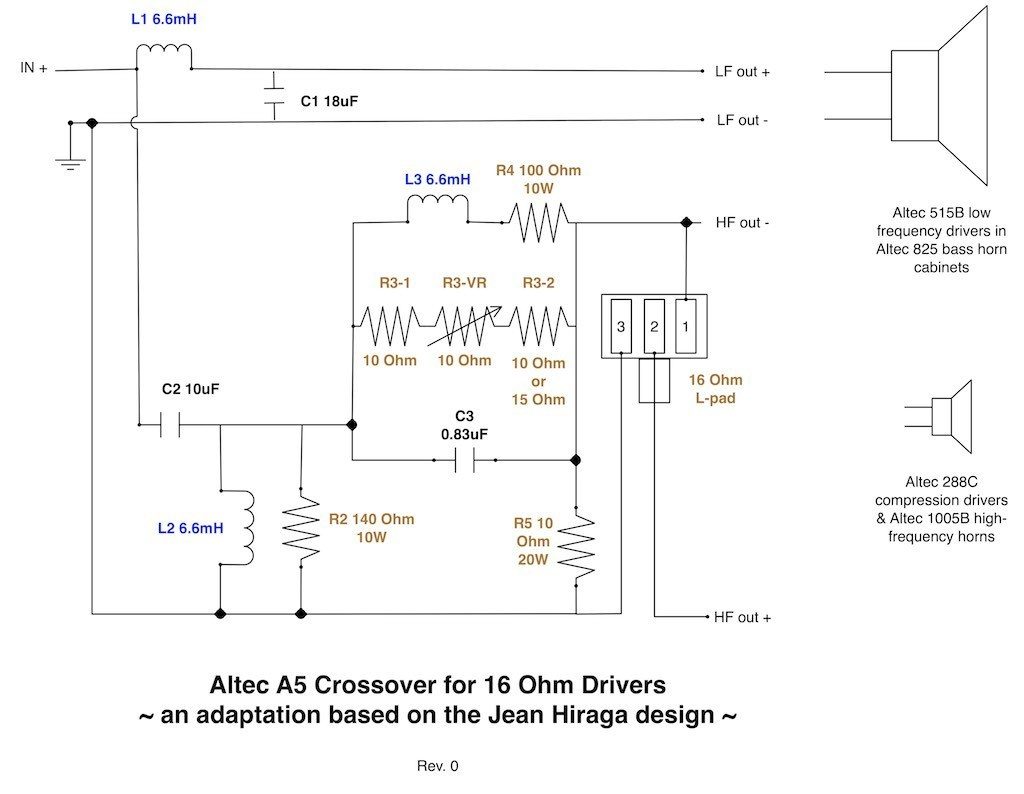
My crossover solution was to utilize a Hiraga-san inspired crossover circuit, modified with an adjustable high-frequency crossover circuit that allows blending of the high- and low-frequency drivers & horns to match rooms of various sizes (more information HERE).
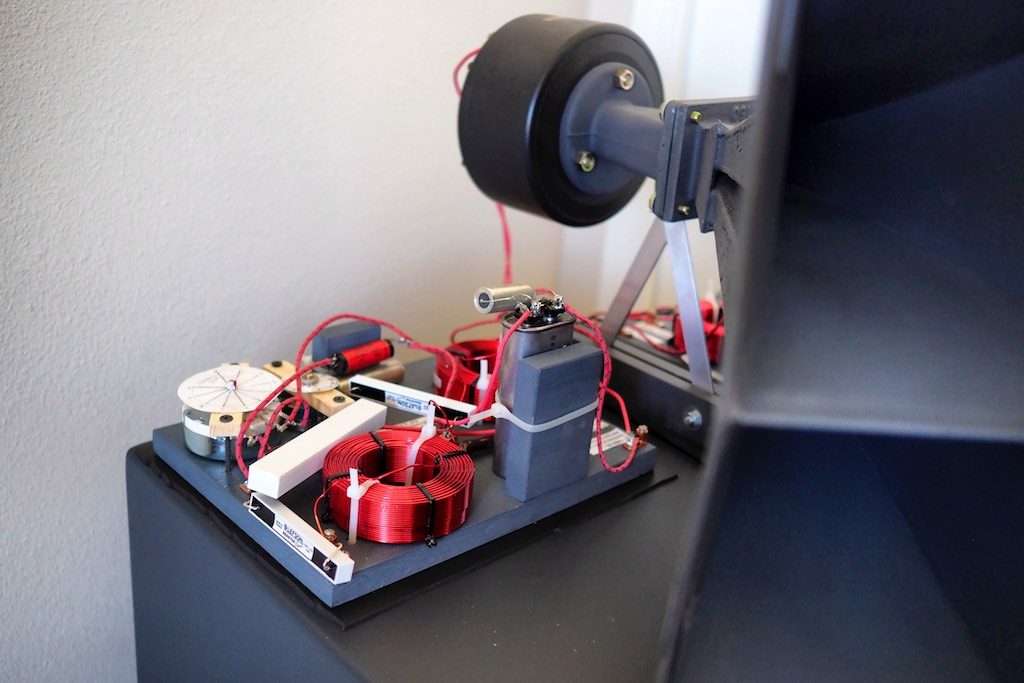

So equipped, the Altec A5 loudspeakers are impressive loudspeakers that are surprisingly flexible and room friendly, and they have adapted remarkably well to their new home, which happens to be a spare bedroom that I use as an audio-video room, with the rather small dimensions of 11-feet x 12-feet x 9-feet (ceiling), and with a 6' x 3'5" x 9' foyer on one end. I have my Altec A5 loudspeakers installed on the long wall in the room corners.

You'll hear people say that large vintage Altec loudspeakers like the A5 loudspeakers won't work well in smaller rooms, which is of course not the case at all if you are using appropriately designed crossovers for them, like the adjustable Hiraga-inspired crossovers I use that allow for optimization of the horn & driver integration for the room size.
You might wonder why I would go to the trouble and expense of restoring vintage Altec A5 Voice of the Theatre loudspeakers, and then developing specialized crossovers for them to make them suitable for home use?
The reason is that the vintage Altec A5 Voice of the Theatre loudspeakers provide a magnificent and immersive presentation of audio from music & film sources that just sounds "right." Once heard they are rather addicting.
The big vintage Altec A5 loudspeakers possess a refined, immersive, spacious, and dynamic presentation that makes film and music sound & feel spooky real, and I constantly marvel at their captivating performance in my audio-visual system.
The amplification for my audio-visual system has been my Leben CS-600 vacuum tube integrated amplifier, and now the newly updated Leben CS-600X, which I reviewed for Positive Feedback recently (HERE).
My Altec A5 loudspeakers are the 16 Ohm versions, so I set the Leben CS-600 and CS-600X integrated amplifier's speakers impedance switch to 16 Ohms, the best match for the A5 loudspeakers impedance.




